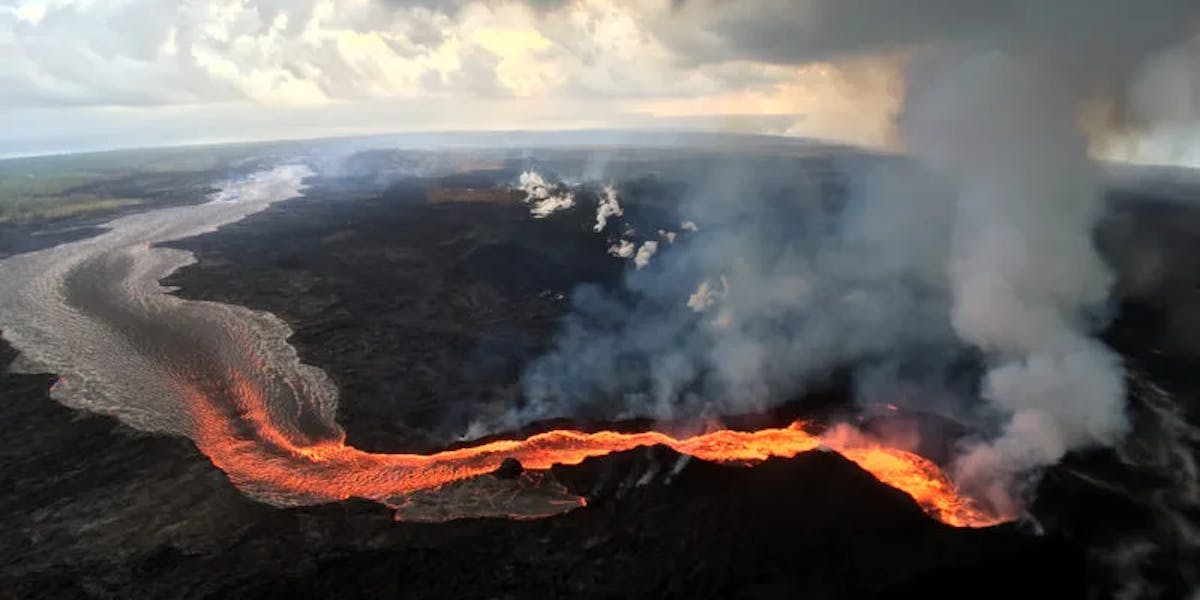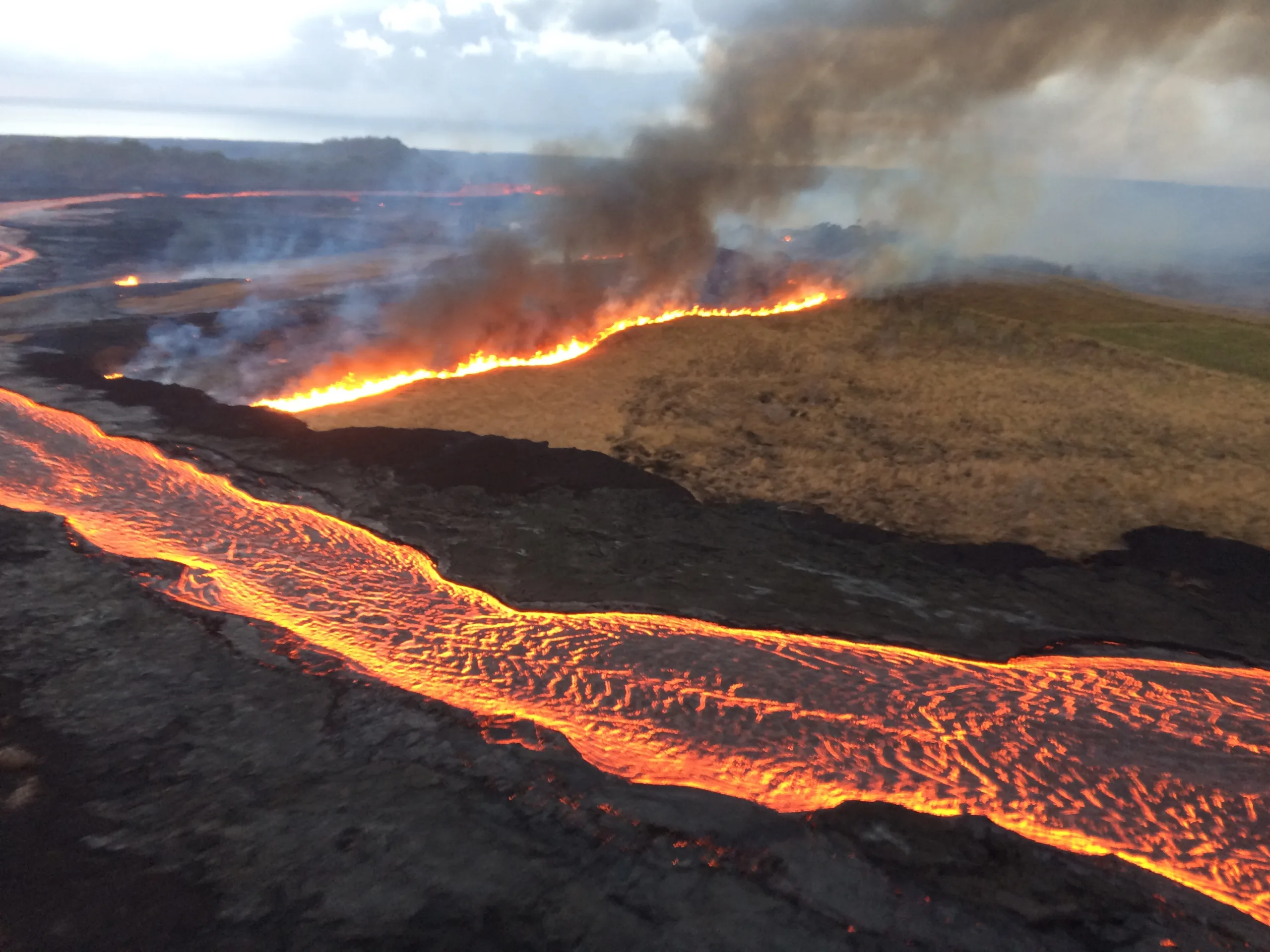Kilauea Volcano eruption continues, coverage falls off

The Kilauea Volcano eruption in the East Rift Zone of the Puna District on the island of Hawaii dominated the news cycle here and around the world for a few days. But the news cycle moved on as inexorably as the lava flow itself. The eruption remains as spectacular and calamitous as it was on May 3 when it began.
News coverage fell off until recently when video of a large explosion of lava near a lava entry point into the ocean went viral. A 20-year-old woman on a “lava boat” tour was seriously injured when a “lava bomb” struck her, shattering her pelvis. Though dark, the video captured a terrifying cloud of ash and streaking chunks of lava and the panicked screams of those aboard the tour boat. More than 20 were injured.
The story was picked up worldwide by various media outlets. The victim said through her tears, “I thought I was going to die,” from the Big Island hospital bed where she continues to recover. Hers is a frightening story that could very easily have turned tragic in a split second. “If it bleeds, it leads,” indeed. The Kilauea eruption was back in the news for a minute.

Despite waning news coverage of the ongoing event, trauma and tragedy continues unabated on the Big Island. The frequency of seismic activity is mind-boggling. 720 homes in the affected area have been destroyed. Many others are now completely inaccessible. Miles and miles of area roads have been buried by the lava flow. Nearly 2,500 area residents have applied to FEMA for assistance.
Beloved natural areas have been claimed forever by the lava, including the Ahalanui Warm Ponds, Malama Flats, and Green Lake and Waiopae Tidepools in Kapoho. Nearly 900 acres of new land has been formed in what was once beautiful Kapoho Bay. The eruption has created 13 square miles of new land.
We blog about Hawaii
because we love Hawaii.
Some Big Island tourism industry businesses have reported a 30%-40% decline in revenue since the eruption began. This is due in large part to the sensational coverage the eruption garnered in its early stages. Bookings have been cancelled due to concerns of lava bombs, toxic gases, and poor air quality among other reasons. Thousands upon thousands of earthquakes have struck in the area, many over the 4.0 magnitude and one as high as 6.4 in the early days of the eruption.
Much of Volcanoes National Park has been closed for weeks. The park generated $166 million for the Big Island economy in 2017.
The truth, however, is that the eruption poses a danger only to those who take it lightly and get too close. Dozens of loitering arrests have been made as thrill-seekers or the dim-witted (or both) wander the affected area.

Interest in the eruption and its spectacular beauty and scale remains high, however. Big Island mayor Harry Kim has announced plans to open a public viewing area as soon as a suitably safe location can be decided.
In a new news cycle that now seems to run by the hour instead of a day or two, it’s easy to lose track of or forget altogether the ongoing devastation from the Kilauea Volcano eruption. For residents and visitors alike, the only real danger is being unaware of the facts and hazards of the eruption.
For updates on current conditions during the ongoing Kilauea Volcano eruption, visit the U.S. Geological Survey’s website.